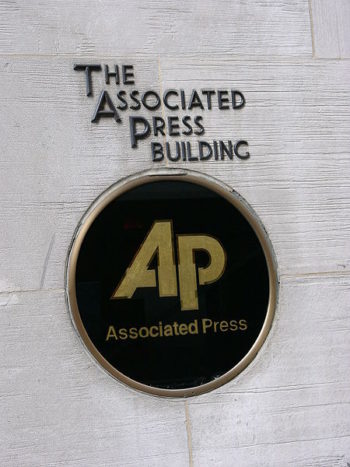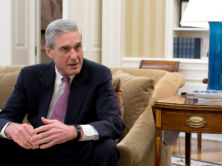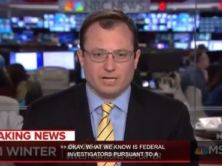
(Credit: Alterego/Wikipedia)
The Associated Press denies being “in any way complicit” with the Nazis in Germany in the years leading up to World War II. The announcement came after a yearlong review of the AP archives, which was prompted by research last year from historian Harriet Scharnberg.
Scharnberg e-mailed iMediaEthics her press statement in response to the AP report, in which she called the review “very laudable and highly appreciated.”
“None of the results presented in my paper are disproven by the review,” she wrote. “It goes without saying that the AP tends to a different assessment of the results.”
Scharnberg’s press statement notes that the AP’s review confirmed much of her research.
The AP listed some of its “key findings for the period 1933-41,” which included that German media changed AP photo captions to be “misleading or offensive.” The AP didn’t fight the German media’s changes to its captions, German staffers in the AP’s German photo subsidiary were pressured by Nazi propaganda officials, and the AP followed a 1935 anti-Semitic rule against employing Jewish people, the AP acknowledged. The AP noted in that case, they helped six former Jewish staffers get out of the country and find new jobs.
That said, the AP acknowledges it didn’t handle things perfectly but denied helping the Nazis. For example, the AP said it “should have done some things” like
- “protesting when AP photos were exploited by the Nazis for propaganda within Germany
- “refusing to employ German photographers with active political affiliations and loyalties.”
The AP claimed that it had a “few” pro-Nazi German employees, including photographer Franz Roth, a member of the Nazi Party.
Despite the pressures from Nazis at the time and those working in their midst as staff in AP operations, the AP said “it was the AP’s belief then and now that the photos gave the U.S. public a much fuller picture of the war than could have been obtained otherwise.”
Scharnberg’s March 2016 German-language research report noted that the AP was in a “formal cooperation with the Hitler regime in the 1930s,” the Guardian reported. Her research found that the AP hired Hitler’s chosen photographer, Franz Roth, that the Nazis used AP photos in propaganda, and that the AP distributed Nazi propaganda.
In response to Scharnberg’s research, the AP denied collaborating with the Nazis, said it was pressured by the Nazis, and promised to review its archives, as iMediaEthics reported at the time. The AP also stated it was unaware of some of the facts Scharnberg reported on. As part of the wire service’s review, AP editors interviewed Scharnberg.
Results of the AP review
Larry Heinzerling, a Columbia Graduate School of Journalism adjunct assistant professor and retired AP deputy international editor compiled the findings of the investigation, which was overseen by AP vice president for standards and editor at large John Daniszewski. The investigation included examining archives, military records, and oral histories from the time, the AP stated.
Scharnberg’s paper “concluded that the AP, by opting to stay in Germany during the years 1933–1941, ceded influence over the production of its news pictures to Nazi propagandists,” the AP noted.
“AP believes it is important to know one’s own story — warts and all — and so we have re-examined the period, taking a hard look, and report our findings here.” The AP went on:
“We recognize that AP should have done some things differently during this period, for example protesting when AP photos were exploited by the Nazis for propaganda within Germany and refusing to employ German photographers with active political affiliations and loyalties, whether to the Nazis or any party. (The law at the time required that all AP German news photographers be German citizens; current AP standards demand that employees refrain from declaring their views on contentious public issues.)
“However, suggestions that AP at any point sought to help the Nazis or their heinous cause are simply wrong. Due in large part to the AP’s aggressive reporting, the dangers of the Nazis’ ambitions for domination in Europe and their brutal treatment of its opponents were revealed to the wider world.”
The AP noted that after Germany declared war on the United States, its Berlin office was closed, its American staff was interned, and the AP’s Germany picture subsidiary was placed under the control of the Germans. From 1941 to 1945, the AP set up a photo swap with Laux to get “German-censored photos,” something the U.S. government approved.
The AP acknowledged it had to make “difficult choices,” but pointed to the praise it received for its coverage of Nazi Germany, including a Pulitzer Prize.
The full report, “Covering Tyranny The AP and Nazi Germany: 1933 – 1945,” is here.






